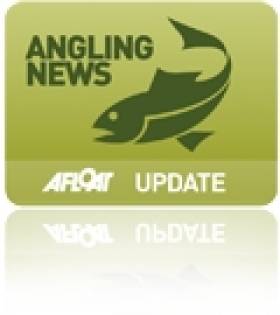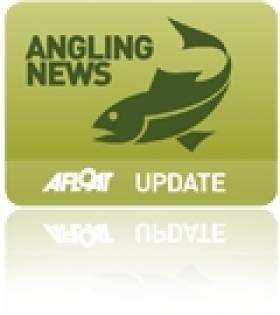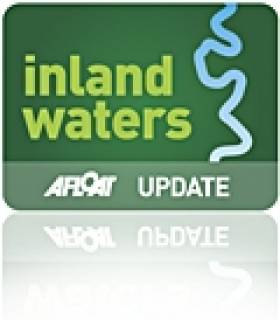Displaying items by tag: Enniscorthy
Coastguard & Lifeboat Crews Called to Rescue People Trapped in Their Homes After Christmas Day Flooding in Wexford
Fethard RNLI joined Kilmore Quay’s coastguard unit in a multi-agency operation to rescue local residents trapped in their homes by heavy flooding on Christmas Day, according to RTÉ News.
It’s reported that a number of people in the village of Bridgetown were safely removed by lifeboat, while motorists who were either cut off by the flooding or trapped in the water were also assisted.
Wexford Civil Defence and Wexford Fire Service also joined in the rescue effort on Saturday 25 December, as Kilmore Quay Coast Guard acknowledged on social media.
Heavy rainfall delayed the arrival of the Waterford-based Irish Coast Guard helicopter Rescue 117 — and was also responsible for the erosion of bridges near Enniscorthy due to the swelling of the River Borough (Boro), a tributary of the River Slaney.
In a statement, Transport Minister Eamon Ryan said his department “will provide full support for Wexford County Council and other councils as they address and repair the damage caused by the flash floods”.
Enniscorthy Anglers Reach Agreement Over Slaney Salmon
#ANGLING - Enniscorthy anglers have reached an agreement with Inland Fisheries Ireland (IFI) over the use of shrimp as bait to catch the Slaney's prized salmon, according to the Enniscorthy Guardian.
The Enniscorthy Local Anglers Association has also agreed with IFI officials not to overfish the river when levels are low.
New signage has now been installed along the river through the town reminding salmon anglers that no more than 15 rods will be allowed at any one time when the water is running low.
All fish must also be returned to the Slaney as per the agreement.
As previously reported on Afloat.ie, the Wexford town's anglers had secured the support of the IFI board in their call to prevent the threatened ban on using shrimp as bait.
Members of the Enniscorthy Local Anglers group argued that shrimp is ideal bait for catching salmon downstream, and said they were "baffled" by the ban on its use by IFI officials.
Pickings have been slim so far this season, with only one fish caught since it began a month ago. But local angler Kris Murphy is "generally optimistic" about the river's salmon stocks.
The Enniscorthy Guardian has more on the story HERE.
Anglers Win Support of IFI Board Over Shrimp Bait Ban
#ANGLING - Enniscorthy anglers have secured the support of the board of Inland Fisheries Ireland in their call to lift the ban on using shrimp as bait.
As the Enniscorthy Guardian reports, members of the Enniscorthy Local Anglers group argue that shrimp is ideal bait for catching salmon downstream, and are "baffled" by the ban on its use by IFI officials.
In a letter to the IFI they wrote: "'We see this ban as putting a direct stop to salmon fishing for 99% of our towns' salmon anglers as this is the only safe method of fishing that suits the stretch of river available to the people of Enniscorthy."
MInister of State Fergus O'Dowd is set to decide on the matter shortly, and anglers hope he will find in their favour in time for the opening of the River Slaney on St Patrick's Day.
The Enniscorthy Guardian has more on the story HERE.
Nothing Fishy About Donard Pupils' Prizewinning Musical
Pupils at Donard National School fended off competition from across Ireland to win a coveted prize in the Inland Fisheries Ireland 'Something Fishy' competition for 2011, the New Ross Standard reports.
Wexford footballer Brian Malone presented fifth and sixth class pupils at Donard NS with goodie bags and an award for their entry 'Something Fishy - The Musical', which features songs and dances about the ecosystem of their local River Boro.
Dr Ciaran Byrne, IFI chief executive Dr Ciaran Byrne, who was on hand at the prizegiving ceremony at the Wexford Education Centre in Enniscorthy, commented on all entrants: “You guys are the caretakers of this environment and if you take this message with you today we will have a much better environment in 20 years’ time.”
More than 160 schools and 7,000 children took part this year in the 'Something Fishy' initiative, which is now in its sixth year of encouraging primary schoolchildren to explore different aspects of fish life.
The Irish Times has more on the story HERE.


























































